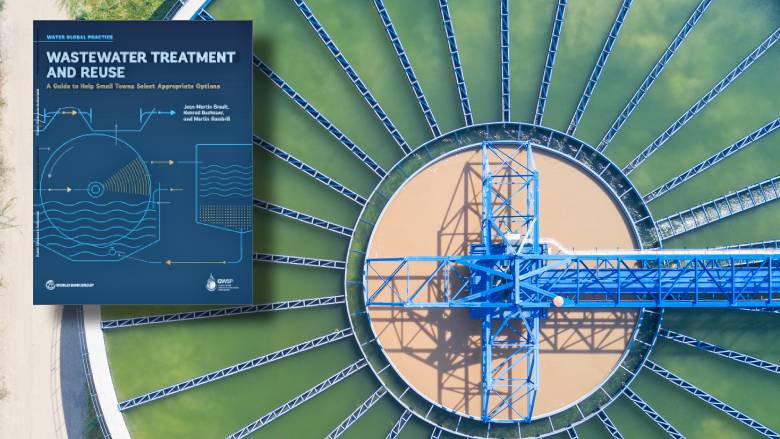Cutting-edge Strategies to Waste Water Treatment Technologies
Cutting-edge Strategies to Waste Water Treatment Technologies
Blog Article
Strategic Approaches to Improve Drainage Therapy Effectiveness and Decrease Environmental Impact
In the realm of waste water therapy, the pursuit for boosted efficiency and minimized ecological influence is a continuous challenge that requires strategic options. The integration of advanced therapy innovations, energy-efficient procedures, resource recuperation methods, enhanced nutrient elimination techniques, and clever monitoring and control systems stands for a multifaceted structure for addressing these pressing worries.
Advanced Treatment Technologies
Sophisticated membrane layer filtering systems have changed sophisticated wastewater therapy processes, significantly improving the elimination of contaminants. These ingenious systems operate by requiring water via a semi-permeable membrane, efficiently dividing contaminations from the water stream. The membrane's microscopic pores catch toxins such as bacteria, viruses, and put on hold solids, permitting only cleansed water to go through. This modern technology has verified to be extremely reliable in removing a variety of contaminants, including pharmaceuticals, heavy metals, and natural substances, which are often challenging to eliminate with standard therapy approaches.
Moreover, membrane layer filtration systems provide countless advantages over standard treatment methods. They need much less room, produce higher-quality effluent, and are much more immune to variations in influent water quality. Furthermore, these systems are extremely functional and can be easily integrated into existing treatment plants or utilized as standalone devices for decentralized applications. As the demand for clean water remains to climb, the fostering of innovative membrane layer purification technologies is important to make certain effective and lasting wastewater therapy practices.
Energy-Efficient Procedures
The integration of energy-efficient processes in wastewater treatment systems is critical for enhancing resource usage and reducing operational costs. One crucial strategy to boosting energy efficiency in wastewater treatment is the use of advanced aeration systems, such as fine bubble diffusers or surface area aerators, which can improve oxygen transfer performance and lower power consumption.
Moreover, optimizing procedure control and automation through the use of innovative sensors and monitoring systems can improve total energy effectiveness by readjusting procedures in real-time based on real need and problems. Carrying out power audits and consistently monitoring energy efficiency indicators are vital practices to identify locations for enhancement and track energy-saving initiatives effectively. Generally, the adoption of energy-efficient procedures in wastewater treatment not only benefits the atmosphere yet likewise contributes to long-lasting cost financial savings and operational sustainability.
Resource Recovery Techniques
With a concentrate on enhancing resource usage and sustainability in wastewater treatment systems, the implementation of source recuperation techniques arises as a crucial element in boosting functional efficiency. Resource recuperation techniques in wastewater treatment involve the recognition and extraction of useful sources from the waste stream, thus transforming what was as soon as considered waste right into a beneficial property. By executing resource recuperation techniques such as nutrient removal and healing, energy generation from raw material, and the production of recyclable water, wastewater treatment plants can minimize environmental effect while maximizing performance.

Improved Nutrient Removal Strategies
Carrying out innovative nutrient elimination techniques is essential for enhancing the performance of wastewater therapy systems. One of the essential strategies used for enhanced nutrient removal is the process of organic nutrient removal (BNR), which involves the removal of nitrogen and phosphorus through organic procedures.

In enhancement to BNR, advanced treatment methods such as membrane layer bioreactors (MBRs) and built marshes can likewise be used to improve nutrient elimination performance. By incorporating these innovative nutrient elimination techniques right into wastewater treatment systems, municipalities and markets can successfully lower nutrient air pollution and shield the environment.
Smart Monitoring and Control Solution
Using cutting-edge innovation, the assimilation of smart surveillance and control systems changes the functional effectiveness of wastewater treatment facilities. These systems include sophisticated sensors and data analytics to continuously monitor vital parameters such as pH degrees, turbidity, liquified oxygen, and flow rates in real-time. By accumulating and assessing this information, operators can gain valuable insights into the performance of the therapy procedures, making it possible for positive adjustments to enhance therapy efficiency.
Smart tracking and control systems likewise sustain remote monitoring capabilities, permitting operators to gain access to real-time information and control features from off-site places. This remote ease of access improves functional additional reading flexibility and responsiveness, enabling swift treatments in case of system malfunctions or changes in influent high quality. Moreover, the anticipating maintenance capacities of these systems aid prevent equipment failings and minimize downtime, inevitably boosting the overall dependability of wastewater therapy operations (Waste Water Treatment).
Conclusion
In final thought, critical methods such as advanced treatment modern technologies, energy-efficient processes, resource recuperation strategies, improved nutrient elimination techniques, and clever monitoring and control systems play a critical duty in enhancing wastewater therapy performance and lessening ecological impact. By executing these techniques, wastewater therapy plants can boost their general efficiency, reduce power usage, recoup valuable sources, and make sure conformity with ecological guidelines. These methods are crucial for efficient and lasting wastewater monitoring techniques.
In final thought, calculated strategies such as innovative therapy technologies, energy-efficient processes, resource recovery methods, enhanced nutrient removal strategies, and clever surveillance and control systems play a crucial duty in boosting wastewater therapy performance and minimizing environmental effect.
Report this page